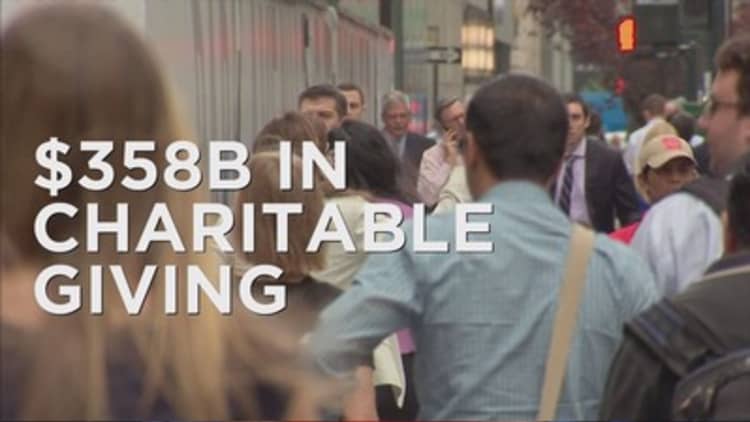The ousting of top executives at the Wounded Warrior Project amid accusations of excessive spending and questions about the group's finances highlights the need for donors to do some digging before giving.
This is not the first time a charity has had concerns raised about its finances: Think United Way, Foundation for New Era Philanthropy, the Central Asia Institute and more.
The takeaway is that while giving may come from the heart, you need to engage your mind as well and make sure your money is being put to good use.
"We are taught charity is a warm, fuzzy thing and that as long as our intentions are good we should be applauded. So we aren't in the habit of making calculated decisions when it comes to doing good," wrote Nick Cooney, director of education at Mercy for Animals and the author of "How to be Great at Doing Good."

Many people give reactively, such as when a friend asks for support for a charity. Others may receive a request from an organization they know. Still others donate to their congregation or other religious institution because they feel a strong connection. But those organizations may not be spending your money the way you want.
There is also the risk that if you are giving online, you may not actually be sending money to the right place. "If you are online looking for a place to give, if you mistype, there are similar sites with similar names," said Bill Kowalski, director of operations at Rehmann Corporate Investigative Services, part of Rehmann Financial Advisors.
Not all those charities are fraudulent, Kowalski said. But even so, they may misuse your money. "We saw this after 9/11. Some charities cropped up and gave 5 percent to actual victims. In my mind, that's a fraud."
Still, donors do have ways to check on even small, local organizations.
"Often, the people you know who serve on charity boards might know some things that are the most important," said Stacy Palmer, editor of the Chronicle of Philanthropy. Alternatively, "you can look at their financial information online, and ask them if they are getting results and how they know."
Another option is to look at rating sites such as Charity Navigator, BBB Wise Giving Alliance, or CharityWatch. These groups provide easily comparable measures of financial efficiency, like the percentage of money spent on programs, administration and fundraising.
One new approach gaining traction argues for measuring charities on other metrics, and allocating money based solely on where it will have the greatest impact.
GiveWell, one organization aiming for impactful giving, focuses on the global poor, arguing that "low-income people in the developing world have dramatically lower standards of living than low-income people in the U.S., and we believe that a given dollar amount can provide more meaningful benefits when targeting the former."
GiveWell also looks for programs that have been studied for efficacy and whose work could be generalized to others in need. Most of the charities it recommends provide health interventions, such as the Deworm the World Initiative led by Evidence Action.
The Open Philanthropy Project, a collaboration between GiveWell and the foundation Good Ventures, asks several questions: What is the problem? How many people does it affect and how deeply? What are possible interventions and who else is working on it? (They expect to have more impact when there are fewer organizations working in the same area.)
Organizations like these "don't care whether they are passionate about a particular cause. They just care whether it is effective, whether they can make a difference," said the Chronicle's Palmer.
All well and good, yet many donors also want to feel excited about where their money is going. That is especially true when families are trying to show their children the value of giving back.
Palmer said donors should consider a mixed approach to increase their effectiveness and keep them and their families engaged.
"You could reserve 20 percent [of your charity budget] for a cause that maybe you are not that interested in, but you think is really effective and can change the world in some way," she said. "It may not be the kind of thing you get excited about compared to, say, the arts, but look at it as a kind of a portfolio."
"It's one thing just to give money or give time," said Thomas Tierney, co-founder and chairman of the nonprofit consultancy The Bridgespan Group. "It's another to give smart in a way that generates the highest social impact for whatever it is you are trying to do."



.jpg?v=1532564692&w=160&h=90)

